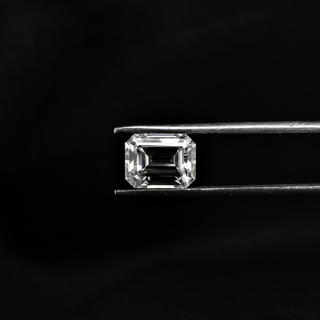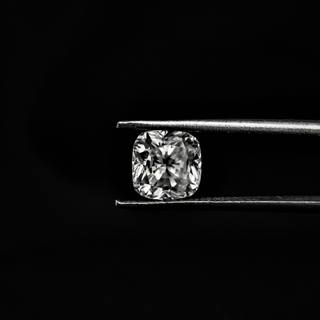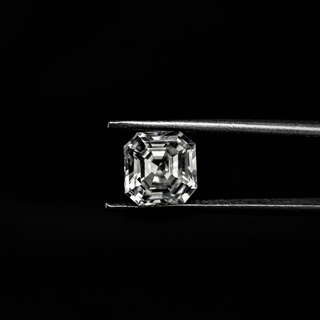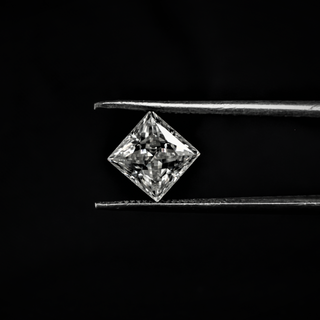Moissanite is gaining serious popularity as a dazzling, ethical, and affordable alternative to diamonds. But if you've come across terms like “Synthetic Moissanite” or “Lab-Grown moissanite,” you might be wondering: what exactly does synthetic mean, and is it real?
In this blog, we’ll clear up the confusion around synthetic moissanite by unpacking the Truth About Lab-Grown Brilliance. Let's explain how it’s made, and why this gem is one of the smartest choices in today’s jewelry market.
What Does ‘Synthetic’ Mean?

In everyday language, “synthetic” might sound like something fake or artificial. But in the world of gemstones, synthetic simply means lab-created, not fake, not artificial.
A synthetic gemstone has the same chemical, physical, and optical properties as the natural gemstones, but it's grown in a controlled lab environment instead of being mined from the earth in the natural mined way.
So, yes synthetic moissanite:
Is real moissanite which Shares the same sparkle, hardness, and durability as its natural form. It's just synthetic moissanite is made in labs using advanced technology under controlled conditions.
Why Is Moissanite Made in Labs?

Natural moissanite is incredibly rare. The few crystals that exist were discovered in meteorites and volcanic rock, but they’re too small or flawed for use in jewelry.
To make moissanite widely available, scientists developed a way to grow large, clear moissanite crystals in laboratories. This breakthrough allowed for stunning, affordable gemstones without harming the planet and in the long run synthetic moissanites are helping our planet indirectly to be safe from unnecessary damage and environmental changes, which we can face from artificial volcanic eruption and mining etc.
How Synthetic Moissanite Is Made
The creation process of synthetic moissanite involves:
1. Heating and pressurizing silicon and carbon under controlled lab conditions
2. Growing a crystal over several weeks or months
3. Cutting and polishing the crystal into gemstones for use in rings, earrings, pendants, bracelets, and more
Lab-grown moissanite is produced with exceptional consistency, resulting in:
- High clarity (often VVS or better)
- Brilliant cuts
- Minimal imperfections
- Uniform quality
Is Synthetic Moissanite the Same as Cubic Zirconia?

Not at all. Moissanite and cubic zirconia are completely different. Let's find the complete features of Moissanite and Cubic Zirconia with a brief comparison.
-
Composition
Moissanite: Silicon carbide
Cubic Zirconia: Zirconium dioxide
-
Durability
Moissanite: 9.25 (Mohs scale)
Cubic Zirconia: 8.0–8.5
-
Sparkle
Moissanite: Very high (more than diamond) Cubic Zirconia: Medium
-
Longevity
Moissanite: Lifetime
Cubic Zirconia: 1–3 years
-
Value
Moissanite: High
Cubic Zirconia: Low
Hence, Moissanite is a premium, long-lasting gemstone, while Cubic Zirconia is often used in temporary or costume jewelry.
Benefits of Choosing Synthetic Moissanite

1. Affordable Luxury: Costs 80–90% less than diamonds
2. Ethical & Conflict-Free: No mining or unethical labor
3. Eco-Friendly: Lab processes reduce environmental harm
4. Highly Durable: Perfect for daily wear and engagement rings
5. Dazzling Fire: Sparkles more than diamonds under light
Is Synthetic Moissanite Worth Buying?
Absolutely. Synthetic Moissanite Is a real, lab-grown gemstone that delivers incredible sparkle, strength, and style without the high cost or environmental impact of diamonds. Many couples are choosing synthetic Moissanite for engagement rings because it’s beautiful, ethical, and budget-friendl
Conclusion
Synthetic moissanite isn’t fake—it’s the real deal, just grown in a lab instead of mined from the earth. With identical properties to natural moissanite and unbeatable advantages like affordability, ethical sourcing, and lasting beauty, synthetic moissanite offers modern luxury for conscious consumers.
Whether you’re buying for love, style, or sustainability, synthetic moissanite is a gemstone that truly shines in every way.
FAQs
1. Is Synthetic Moissanite the Same as Fake Diamond?
No. It’s a real gemstone—not a fake or imitation—and is not trying to imitate diamonds, though it looks similar.
2. Can You Tell the Difference Between Natural and Synthetic Moissanite?
No. They are chemically and visually identical. The only difference is origin.
3. Is Synthetic Moissanite Valuable?
Yes. While not investment-grade like diamonds, it holds value for its beauty, durability, and craftsmanship.
4. Can I Insure Synthetic Moissanite?
Yes. You can insure it just like any other fine jewelry.
5. Does Synthetic Moissanite Fade or Change Color?
No. It retains its brilliance and color permanently with proper care.
6. How Is It Different from Lab-Grown Diamonds?
Moissanite is made of silicon carbide, while lab diamonds are pure carbon. They look similar but are different stones.
7. Is Synthetic Moissanite Suitable for Engagement Rings?
Definitely. Its durability and brilliance make it a perfect choice.






